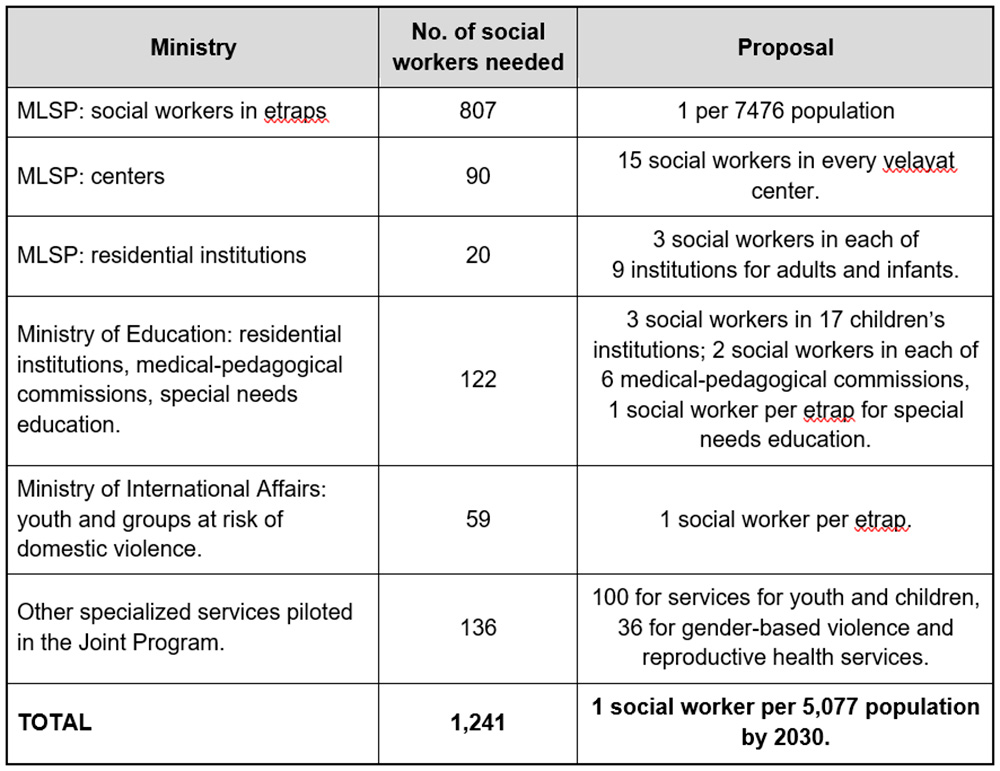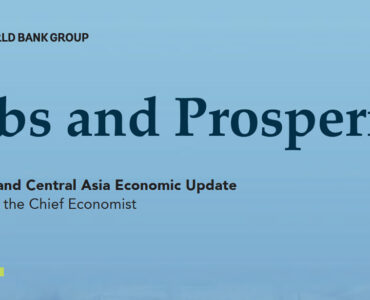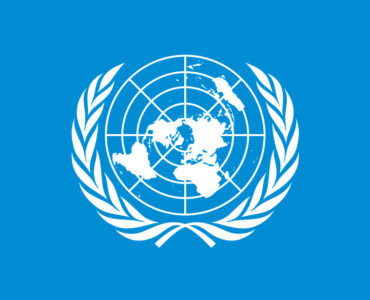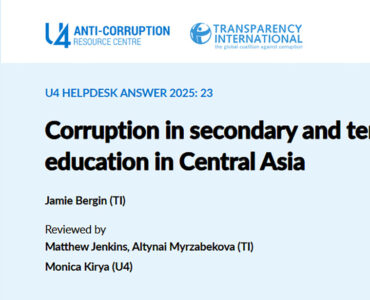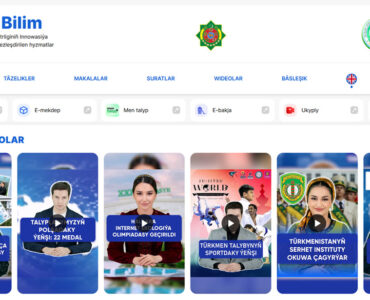On 25 April 2023 UNICEF and the Ministry of Education of Turkmenistan discussed ways to strengthen the child care and family protection systems in Turkmenistan. Later in June representatives of the government, UNDP and UNICEF reviewed the draft National Social Services Development Plan (NSSDP) for 2022-2030. It is unclear when the plan will be publicly available and what exact steps will be taken to improve the social service system in Turkmenistan. In this article we attempted to summarize the work done so far by the government of Turkmenistan in partnership with UN agencies.
Major work related to social services was initiated as part of the UN – Turkmenistan Joint Programme on community-based social services. It introduced a new model of social services at the local level, together with relevant legislative reviews and capacity building of social workers. Figure 1 provides a brief overview of the program including its duration, budget and key stakeholders.
Figure 1. UN-Turkmenistan Joint Program on Community-Based Social Services
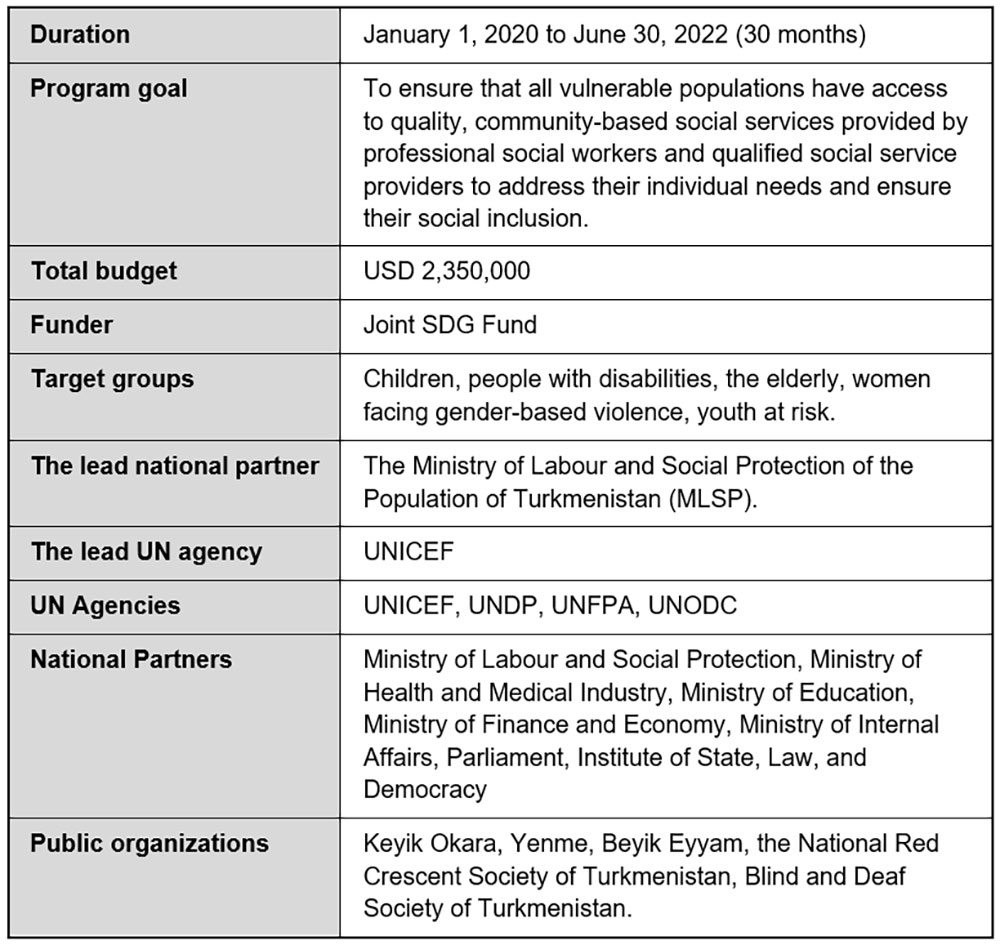
Source: Joint SDG Fund.
How many social workers are in Turkmenistan?
As part of the Joint Program there were 20 pilot etraps across the country along with 45 social work specialists hired by the Ministry of Labor and Social Protection of the Population (MLSP). Of these 12 specialists work in Ashgabat, 6 specialists for each region in Ahal, Balkan and Dashoguz, 7 in Lebap and 8 in Mary velayats. Out of these 45 specialists 27 are men. The role of this newly created profession is described here.
After completing an initial training, the social work specialists conducted a needs assessment of vulnerable populations across Turkmenistan and identified gaps in the current system of social service provision. Then 12 new specialized social services were piloted in 2021 in Ashgabat, Mary and Turkmenabat targeting people with disabilities and chronic diseases, children left without parental care or at risk of falling into this category, youth from risk groups and victims of domestic violence. In Ashgabat, these specialized social services were provided by state organized non-governmental organizations such as Keyik Okara, Yenme and the National Red Crescent Society of Turkmenistan and in Turkmenabat by Beyik Eyyam. In total, around 675 families including 1,241 children and 1,862 adults have benefited from direct support of etrap social work specialists and 292 vulnerable people and their families benefited from twelve specialized social services (UN Evaluation Report).
How are the social workers trained?
There was a comprehensive 10-month long training programme for the social service workforce in Turkmenistan provided by UNDP. National trainers completed an online training-of-trainers provided by the Bulgarian Social Activities and Practice Institute (SAPI). Later they traveled to all velayats to hold on-site training for new social work specialists who completed a total of 45-day training in social work. They also received monthly supervision from international experts in social services. Additionally, 106 social work managers, 67 representatives of governmental and non-governmental social service providers, and 79 representatives of allied workforce were trained on foundations of social work and social services.
Moreover, a new major in social work is being introduced in four universities in Turkmenistan starting from September 2022. A cohort of university teachers was trained and supported to design a curriculum on social work degrees. The curriculum is aligned with international standards and with the local legal, social and cultural context in Turkmenistan (UN Evaluation Report).
Who is eligible for social services?
Following people are eligible for social services:
- Persons in need of permanent or temporary social services;
- Single persons and persons who have partially lost their ability to care for themselves due to old age, illness or disability.
The grounds for recognizing a person in need of social services include – disability, old age, consequences of occupational injury or disease, loss of a breadwinner, loneliness, orphanhood, family trouble, homelessness, and being forced to change one’s country of permanent residence. Social services are also available to foreign citizens and stateless persons permanently residing in Turkmenistan, refugees, legal entities regardless of the form of ownership and individual entrepreneurs engaged in activities in the field of social services.
What are the relevant laws and documents related to social services?
In March 2021 amendments were introduced to the Code of Turkmenistan on social protection of the population. On December 20, 2021 a new Law “On Social Services” was adopted, which came into force on January 1, 2022. It defines the legal, organizational and economic basis for the provision of social services to certain categories of persons. The law stipulates that financing of social services is done through the State Budget and funds allocated in the form of charitable and humanitarian assistance.
The law also assigns specific mandates to government bodies such as the MLSP to lead the ongoing development of social services, the Ministry of Internal Affairs and Ministry of Health and Medical Industry of Turkmenistan to contribute to social service development and delivery, and the Cabinet of Ministers of Turkmenistan to provide cross-ministry leadership.
Some other relevant documents addressing social services include:
- The Program of the President of Turkmenistan on Socio-economic Development of the Country for 2019-2025 available in Turkmen and Russian languages.
- The UN Country Programme Document for Turkmenistan (2021-2025) is available in English language.
- The Country Cooperation Program of UNICEF and the Government of Turkmenistan for 2021-2025 is available in Turkmen, Russian and English languages.
What research and statistics are available in the last 10 years on these issues?
Donate to support Turkmen analysts, researchers and writers to produce factual, constructive and progressive content in their efforts to educate the public of Turkmenistan.
SUPPORT OUR WORKUNICEF has assigned Turkmenistan a statistical capacity score of 34 out of 100, indicating poor statistical capacity of the country. Given the lack of relevant and disaggregated statistics it is difficult to accurately evaluate the current state of childcare and family protection systems in Turkmenistan. There is no designated section on the State Statistics Committee website where one can review and download socio-economic statistics, which is a common practice in other countries.
There is, however, a new section called SDGs which was developed in November 2021. The UNDP provided the software to collect, process and disseminate data related to Turkmenistan’s progress on achieving SDGs. Some of these goals are relevant to children. But for some of the indicators the statistics are missing and it says ‘it is being processed.’ For instance, data on ‘time spent on unpaid care work and household work, by sex, age and place of residence’ or ‘proportion of the population living below the international poverty line, by sex, age, employment rate and place of residence’ are missing.
Similarly, the Country Cooperation Program of UNICEF does not provide any comprehensive and disaggregated data on the situation of children in Turkmenistan. One of the few data points mentioned in the document include:
- The literacy-numeracy level of children aged 3-4 years is only 20%.
- The national average for fathers’ engagement is merely 13% while it is less than 5% in three velayats. However, they do not specify which exact velayats.
- There are about 4,000 children with disabilities in institutions who could be assisted to stay with their families and attend regular schools.
As part of the Joint Program partners have conducted needs assessment surveys and analyzed available government statistics to examine the state of social services in Turkmenistan. Based on these analyses, Figure 2 summarizes some of the challenges in the social services sector in Turkmenistan.
Figure 2. Challenges in the Social Services Sector in Turkmenistan
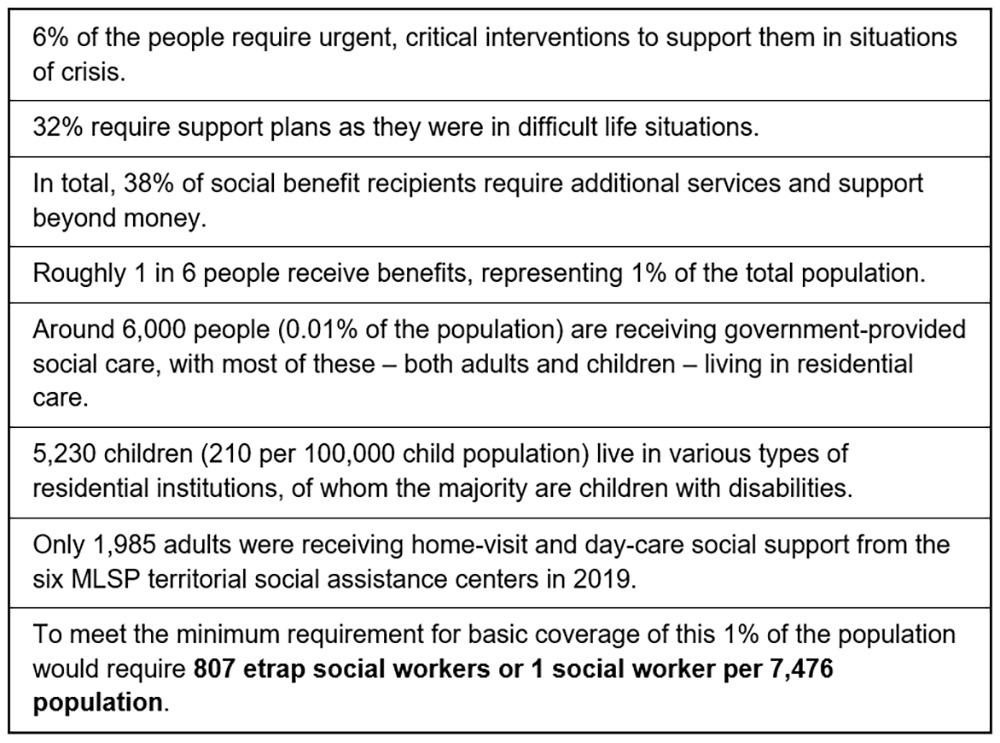
Source: United Nations Turkmenistan.
Joint SDG Fund has a designated page with relevant news, blog posts and press releases describing the Joint Program. There is also a UN report available in Turkmen, Russian and English languages reviewing the achievements of the program. Some of the program achievements include:
- Adoption of a new Law on Social Services and development of relevant regulations.
- Development of a profession – social work specialist.
- Including the salaries of 45 social workers in the state budget in 2021-2022.
- Doubling the number of people able to access social services, from 0.01% to 0.02%.
- There is a demonstrated ownership from the MLSP over the programme results, from the Mejlis over the new Law on Social Services, and buy-in for budget allocation from the Ministry of Finance and Economy of Turkmenistan.
Turkmenistan is also part of the Transformative Monitoring for Enhanced Equity (TransMonEE). It is a regional partnership initiative among the National Statistics Offices in Europe and Central Asia to monitor the situation of children and women. However, the website shared for the State Committee on Statistics of Turkmenistan actually belongs to the Turkish Statistical Institute. The TransMonEE data dashboard has limited statistics on Turkmenistan with many indicators missing data, which makes it difficult to effectively assess the situation of children and women in the country.
What is next?
UNICEF is currently supporting the government of Turkmenistan in developing its second National Action Plan (NAP) on Child Rights for 2023-2028. The plan has been approved in June 2023. The previous one was the National Plan of Action for Realization of Children’s rights in Turkmenistan for 2018-2022.
To ensure sustainability of the Joint Programme results, partners have developed and proposed to the government the draft National Social Services Development Plan (NSSDP) for 2022-2030. The plan lays the ground for the Phase II Joint programme development where the government is expected to co-finance and there is already funding from the Joint SDG Fund Development Emergency Modality. The goal is to scale up the community based social services to every district of Turkmenistan.
The pilot services revealed the need to expand the new services throughout the country. For instance, the UN evaluation study suggested having 176 social workers in 2023, which is almost 4 times the initial number of social workers. It also proposed having 250 university graduates in social work every year starting from 2025. It is estimated that by 2030 Turkmenistan will need 1,241 social workers or 1 social worker per 5,077 people. The table below provides the breakdown of the number of social workers needed by the ministry.
Figure 3. The Number of Social Workers Needed in Turkmenistan, 2022-2030
Source: United Nations Turkmenistan.
However, it is not clear how much money will be needed to meet this need and what share will be co-financed by the government of Turkmenistan. For example, to achieve universal access to reproductive health in Turkmenistan alone requires USD 7.5 million investment in family planning until 2030 (2021 UN Turkmenistan Annual Results Report). The website of the Ministry of Labor and Social Protection of the Population of Turkmenistan (MLSP) does not have a dedicated page describing the Joint Program and its results or the future plans to sustain the provision of social services in Turkmenistan.


